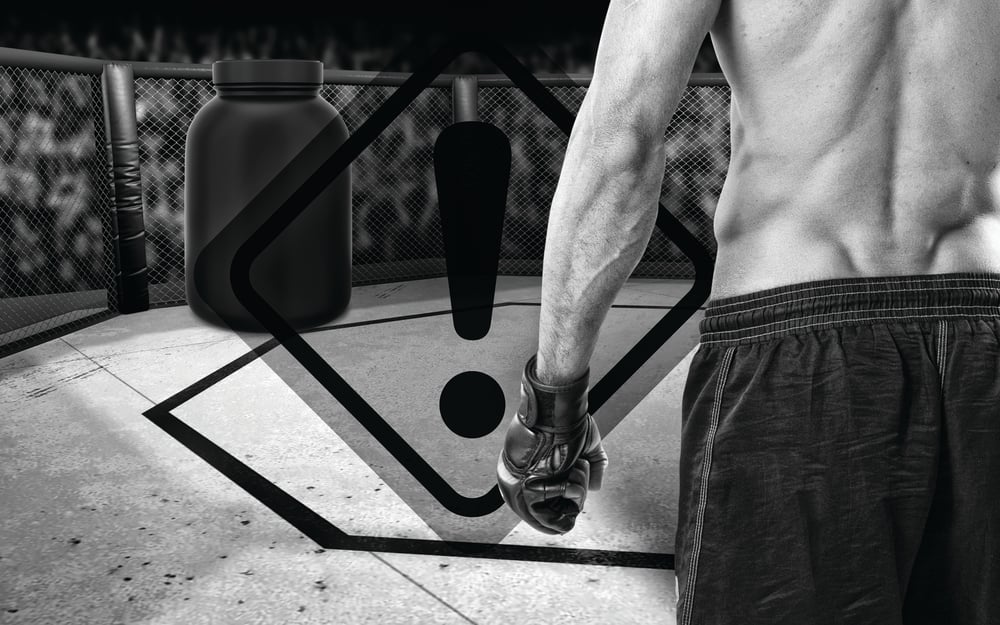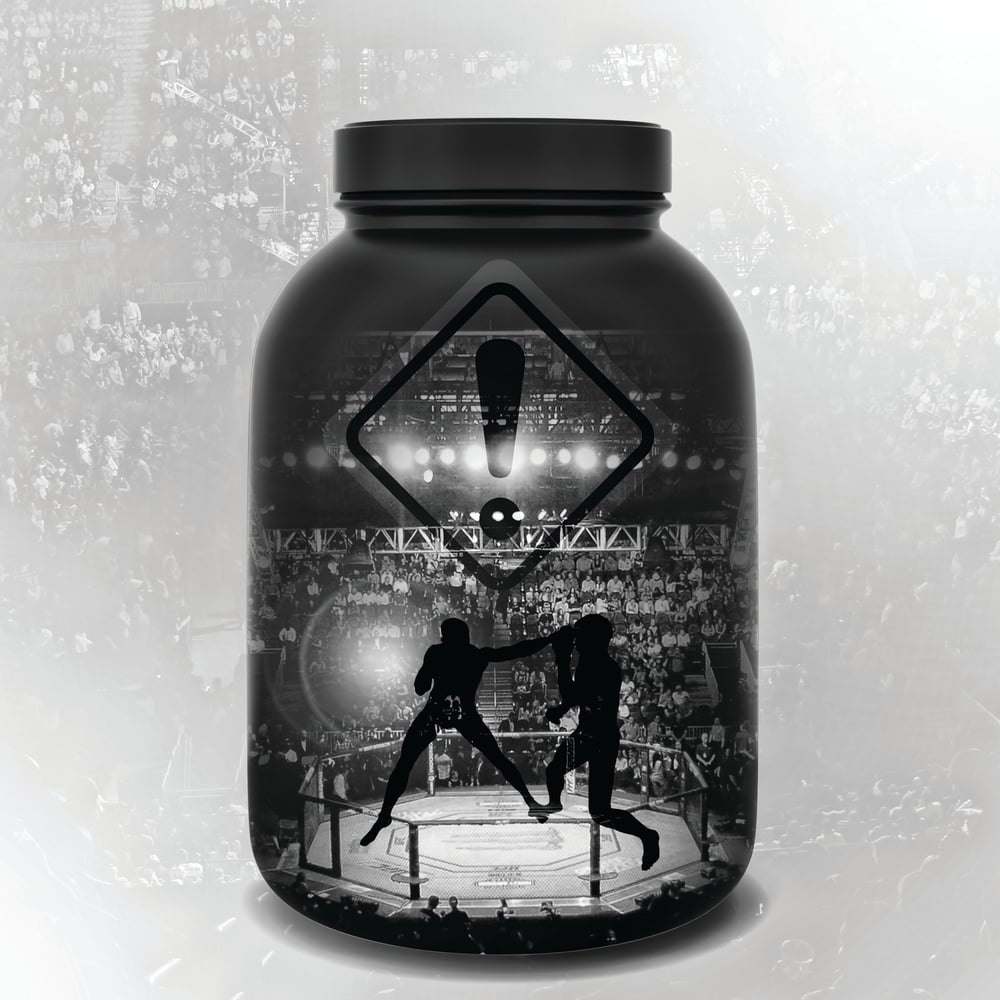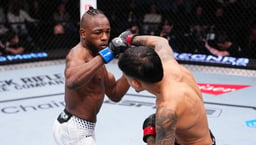
Issue 146
October 2016
Sports nutrition products can be the perfect sparring partners to support your strength & conditioing – but only if you know what you’re taking.
Taking safe supplements as a professional fighter can be like walking through a minefield. There may be tangible rewards, but there could be great risks lying in wait. It’s a huge gray area. One mistake could lead to ridicule and loss of earnings or perceived integrity. Make no mistake, sports supplements are not about cheating – but they are about being safe.
Experts from nutritional science, anti-doping and medical science insist there are three questions which should underpin every decision in taking a sports supplement into the body:
Is it safe?
Is it legal?
Is it effective?
“The first thing I always ask an athlete is, ‘You say you want to take supplements but what do you actually want to do?’” explains Michele Verroken, for 20 years involved with the UK Sport’s Anti-Doping department, a quasi-Government organization, and its former leading administrator.
“For the most part, diving down the route to take supplements without a clear idea about what you’re attempting to do is kind of mistaken. Any dietician or sports nutritionist worth their qualification will say, ‘First, we have to analyze your diet and see whether you could amend your diet in some way.’”
Verroken advises care and caution for athletes being tested with some of the labels on supplements. Athletes ought to be cautious de rigueur, in her view.
For the last 13 years, Verroken has been the director of Sporting Integrity, an independent company that offers advice on the subject to sports bodies and organizations. She adds: “The professional sports nutritionist approach would be to look at your diet. Not just what you eat but when you eat it and what you’re actually doing at that time. Is it when you’re training? Is it when you’ve finished training? Is it when you’re competing?
“Your diet should vary slightly throughout all that and then the timing of your eating post exercise is so important. Actually, for a lot of people, it’s entirely possible to look at minor changes to their diet before going down the supplement route.
“We know from the research we do for all of the sports that MMA is a fledgling sport is still finding its feet. It’s just getting involved with WADA (World Anti-Doping Agency) and anti-doping. It showed me that in terms of training, nutrition and anti-doping, they’re catching up at the moment,” explains Mark Ellison, head nutritionist for the highly successful Great Britain Olympic teams in boxing, judo and taekwondo.
Ellison, for example, recommends supplements for boxers, judokas and taekwondoins in his care. He would advise similar for MMA fighters. “My list of products that I buy are sports drinks, gels, liquid meals, whey protein, sports bars, electrolytes, vitamin D, probiotics, caffeine, beetroot juice, creatine... That’s a pretty comprehensive list.
“From my exposure to MMA,” adds Ellison, who also works with English soccer team Manchester United, “there are basic flaws in diet and training that could be much, much better. If you actually start your weight-making 12 weeks before your fight and get the basic principles of diet, training and lifestyle nailed down – these are the things people should be focusing on, not necessarily a long list of supplements.”

But the bottom line, adds Ellison, is that athletes are responsible for anything they willingly digest. He says: “Even if an athlete takes advice from me or anyone else, they are ultimately responsible for what goes in their body. In-Form Sport has a risk-reduction program that is used is global now. There are no guarantees. That company will test supplements that use their system for known doping violations. They test for a huge list of contaminants that could be in there.”
Verroken again. “This is a strict-liability environment so if you check positive you must expect you will be facing a violation charge.”
There are safeguards out there, and guidelines that can be followed to make the process safer for fighters, both professional or amateur, and even those who simply train MMA and other fight sports.
Organizations like the Sport and Exercise Nutrition Register (SENR) are a good place to start for mixed martial artists. Its practitioners are signed up to an ethics code for clean sport. WADA also has a pretty comprehensive free app where athletes can check ingredients against its banned list.
The Australian Institute of Sport is another renowned resource when it comes to explaining supplement use, based on food-first intake. The AIS puts supplements into categories – A to D – outlining things that will definitely work for athletes and fighters, with a category of banned and illegal substances, grouping where substances just don’t work, and a further group of things that probably work but there isn’t enough evidence and research yet to be absolutely certain.
A group of global experts created the AIS list which explains that “the ABCD Classification system (see page 64) ranks sports foods and supplement ingredients into four groups based on scientific evidence and other practical considerations that determine whether a product is safe, legal and effective in improving sports performance,” says the AIS.
The good, the bad and the ugly of supplements, perhaps, in the wild west frontier in which so much remains new and unknown.
Another organization, Informed Sport, has a risk-reduction program with the supplements and providers it recommends – but even then there are no guarantees. The company will test supplements that use its system for known doping violations, but even tested products may have only been tested to cover 90% of the known contaminants.
“There are organizations and laboratories that offer services,” says Verroken, “but if you read the small print, and that’s very important, it will say, ‘We have tested these supplements and they do not contain the following,’ and that is it. They give a specific list of things it doesn’t contain. What they cannot say is that it doesn’t contain any prohibited substance because they don’t know that.”
Caution, again, but the advice is lucid. “The issue,” adds Ellison, “Is that they don’t test everything, they just test things that are likely to contaminate. To test every single banned substance under the sun would be impossible.”
Ellison stresses that documentation should always be retained by professional athletes regarding their supplements also. “The companies test for the things that have popped up in supplements in the past. Stimulants and anabolics. I show that certificate to the athletes. The other thing you’ve got to check on is the batch number of the product. Check it’s your specific batch you’ve got a certificate for, and perhaps most importantly, check the date because the anti-doping rules change every year.
“You might have a product that was tested last year and this year it has changed. Athletes have been caught out that way. They obviously didn’t get the memo post Christmas from their doctors or whoever it might be that they should stop taking it because it has gone on the banned list.”
Then there are medical supplements. “Medical supplements are there to treat deficiencies,” adds Ellison. “I wouldn’t recommend everyone goes and takes vitamin D, but certainly, every single elite athlete we work with will get their vitamin D levels tested. The stuff in the medical area you take on medical advice.
“We test blood levels, iron, but vitamin D is quite unique because you get it from sun exposure. If I was to do a diet review with you now and you tell me you never eat red meat, and it’s crystal clear you’re going to be low in iron, we might advise you to increase your iron level through diet. But if you’re a strict vegetarian we might instruct you to take an iron supplement. With vitamin D, you can’t even estimate that from diet. You’re only going to get it from sun exposure. So we always test first.”
But there are is an abundance of products that can help fighters recover and help increase their performance. “Beta-alanine is one of the great products for combat athletes. You don’t have an abundance of it in the diet. There’s a huge amount of histidine in the diet. When those two combine in the body they produce something called carnosine and that has a huge affinity with hydrogen ions. Basically, it works as a buffer to soak up those hydrogen ions, which is one of the by-products of lactic acid.
“The more lactic acid you can produce as a fighter, the fitter you are and the better conditioned you are. What hurts you is the acid that comes with it. The acid bit causes fatigue, soreness. If you ever did a 400m run, it’s the acid bit which tires you and hurts and makes you feel like you’re running in sand.”
Ellison again. “Recovery bars, which are protein and carbohydrate rich, (and) energy bars, which are just carbohydrate, are used by fighters before bouts. Protein bars are very useful when fighters are making weight and trying to reduce their carbs. Food first, is what nutritionists would always advocate, but supplements are invaluable in the sports food category, when perhaps it is not practical to get food.
“Then there’s the stuff that gives you a real boost and a lift on the night of a fight. Caffeine, for the combat athletes, has a main benefit of alertness. Alertness and arousal... You just feel sharp and alert before you compete.”
“Caffeine and beta-alanine are two of the big performance-enhancing strategies we have for combat sports. If you see any athletes itching their nose or ears it’s probably because they have taken their beta-alanine supplements at lunch. That’s one of the side effects of it. It causes a mild paraesthesia (typically tingling or pricking). But athletes love it.
“When you take caffeine, you feel an instant buzz as all of us do,” adds Ellison. “You know it’s working. If I gave you a recovery shake after a training session, you wouldn’t really notice anything. You’d just trust me. And hopefully you’d feel a bit better tomorrow and you can make that link. But if I give you caffeine, you’ll feel it straight away. If I give you beta-alanine, you might not know about it in the performance, but as soon as you take it it’s going to make your face itch, so you know it’s doing something.
“Bicarbonate does exactly the same thing as beta-alanine but in the blood. Bicarbonate is the old-fashioned strategy we used to use for buffering. It’s highly effective but it’s hard to get right. Some people take bicarb before they compete and it just puts them on the toilet having osmotic diarrhea.
“You have to drink quite a lot of it. It’s not necessarily very pleasant. When beta-alanine came along, we stopped using bicarb. It’s still on the list because in a lot of other sports it remains popular. It will just be a powder you put into a drink.”
Then there are other helpful products such as beetroot juice and creatine. “Beetroot juice helps increase blood flow, while creatine is probably one of the most researched products. You take it in a similar way to beta-alanine. You load up on it over a couple of weeks. A lot of guys, certainly my combat athletes, just take it every day. The benefits are great. People used to load up on it prior to competition and in certain training blocks.”
“But the loading is associated with weight gain. It holds water in the muscles. So that’s not really beneficial for combat athletes. We tend to take a small dose all the time. If you’re working in that short energy pathway, it will help in those explosive strength-training sessions.”
Some teams carry products with them to competition. The GB boxing team, for example, takes products to overseas competitions from their sponsors, which will include protein and carbohydrate recovery shakes, for use post-training.
“It’s critical to get something in quick in that half-an-hour window after training, make sure they recover quick,” explains Ellison. “And loads of carbohydrate and electrolyte drinks to rehydrate the athletes before and after sessions.
“All the guys started a beta-alanine strategy where they were loading up on this specific protein for six weeks before the Olympic Games. It buffers the lactic acid in their muscles. We don’t use it all the time. We save it for the big events and they can get a sport-performance enhancement from that.”
The warnings, if not clear, are there. Know your body, and know what you’re putting in there.

Warning - check contents
Buzzwords worth further investigation before you ingest:
Growth
Enhancement
Muscle Building
Weight Loss
Fat Burner
Sexual Enhancement
Breakthrough
Testosterone
BANNED!
Some cold and flu nasal inhalers a contain levomethamphetamine, which is a form of methamphetamine and on the WADA prohibited list.
SAFE!
Caffeine was on the WADA prohibited list until 2013, but it’s now safe to start your training day with a double espresso.
AS EASY AS ABCD
Your quick guide of what you can take and what you have to avoid, from the Australian Institute of Sport.
Group A
Overview
Supported for use in specific situations in sport using evidence-based protocols. Provided or permitted according to best-practice protocols.
Examples
Sports foods: drinks, gel, liquid meal, whey protein, bars, electrolyte replacement.
Medical supplements: iron, calcium, multivitamin/mineral, vitamin D, probiotics .
Performance supplements: caffeine, beta-alanine, bicarbonate, beetroot juice, creatine.
Group B
Overview
Deserve further research. Could be considered for provision to athletes under a research protocol or case-managed monitoring situation. Provided to athletes within research or clinical monitoring situations.
Examples
Food polyphenols that may have, for example, antioxidant and anti-inflammatory activity. Quercetin, tart cherry juice, acai, goji, curcumin.
Medical supplements: iron, calcium, multivitamin/mineral, vitamin D, probiotics.
Antioxidants C and E, carnitine, HMB, glutamine, fish oils, glucosamine.
Group C
Overview
Have little meaningful proof of beneficial effects. May be permitted for individualized use by an athlete with specific approval.
Examples
Any group A or B products used outside approved protocols.
Group D
Overview
Banned or at high risk of contamination with substances that could lead to a positive drug test. Should not be used by athletes.
Examples
Stimulants: ephedrine, strychnine, etc.
Prohormones and hormone boosters.
Growth hormone releasers and peptides.
Other banned substances.










